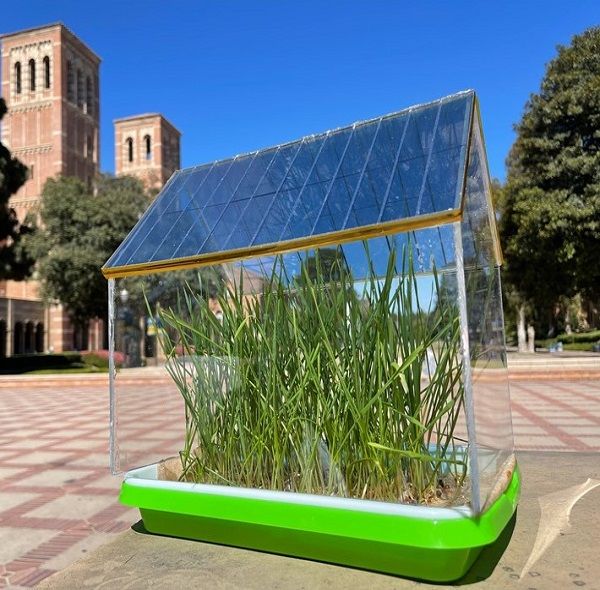Engineers at the University of California have designed solar roofs that can harvest energy for greenhouses to power their lamps and water controls while still allowing sunlight to reach the plants.
Researchers from the UCLA Samueli School of Engineering in Los Angeles have been augmenting semi-transparent organic solar cells with a layer of a naturally occurring chemical called L-glutathione to extend the solar cells’ lifetime.
Organic solar cells typically have a much shorter lifespan than traditional technologies, as they rely upon carbon-based materials which degrade over time when exposed to sunlight.
The chemical addition was found to not only extend the lifetime of the cells but also improve their efficiency, while still allowing adequate sunlight to reach plants in a greenhouse prototype about the size of a small dolls house.
“Organic materials are uniquely suitable for agrivoltaics because of their light-absorption selectivity,” explained researcher Yang Yang. “The main drawback that has prevented their widespread use up to now is their lack of stability.”
The researchers found that the additional layer of L-glutathione prevented the other materials in the solar cell from oxidising, which resulted in the organic cells maintaining more than 80 per cent efficiency after 1000 hours of continuous use — as opposed to less than 20 per cent without the added layer.
One had a transparent glass roof with segments of inorganic solar cells, and the other had a roof made entirely from semi-transparent organic solar cells.
The crops in the greenhouse with the organic solar roof grew more than the crops in a regular greenhouse. The scientists believe this is because the L-glutathione layer blocked ultraviolet rays, which can inhibit plant growth, and infrared rays, which can cause greenhouses to overheat and plants inside to require more water.
“We didn’t expect the organic solar cells to outperform a conventional glass-roof greenhouse,” said Yepin Zhao, the lead author of the research.
“But we repeated the experiments multiple times with the same results and after further research and analysis, we discovered that plants don’t need as much sunlight to grow as we’d originally thought. In fact, too much sun exposure can do more harm than good, especially in climates such as California’s, where sunlight is more abundant.”
The team now plans to scale up production of the organic solar cells for industrial use and hopes to make environmentally friendly greenhouses that incorporate the organic solar cells commercially available in the future.
Source: E&T










